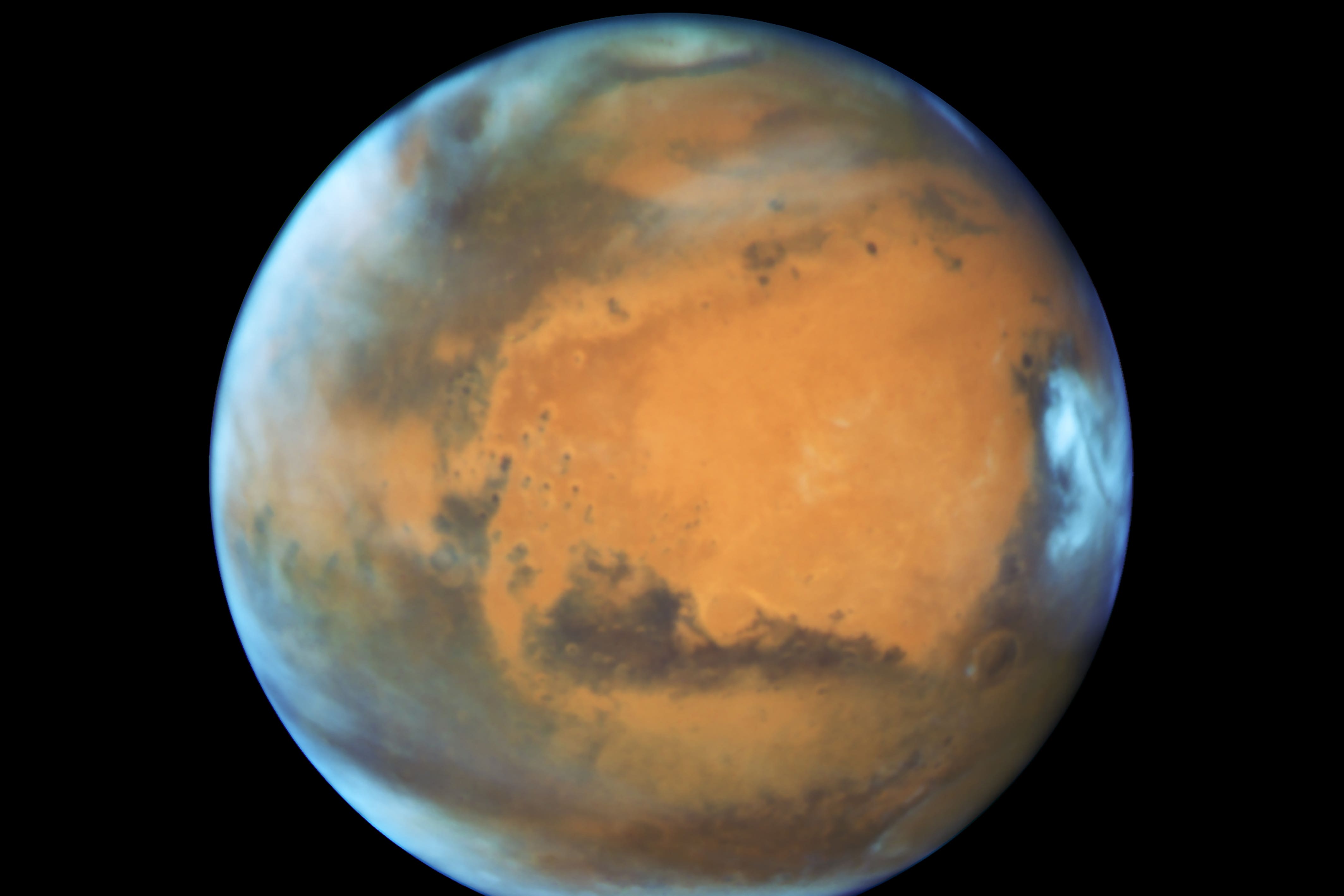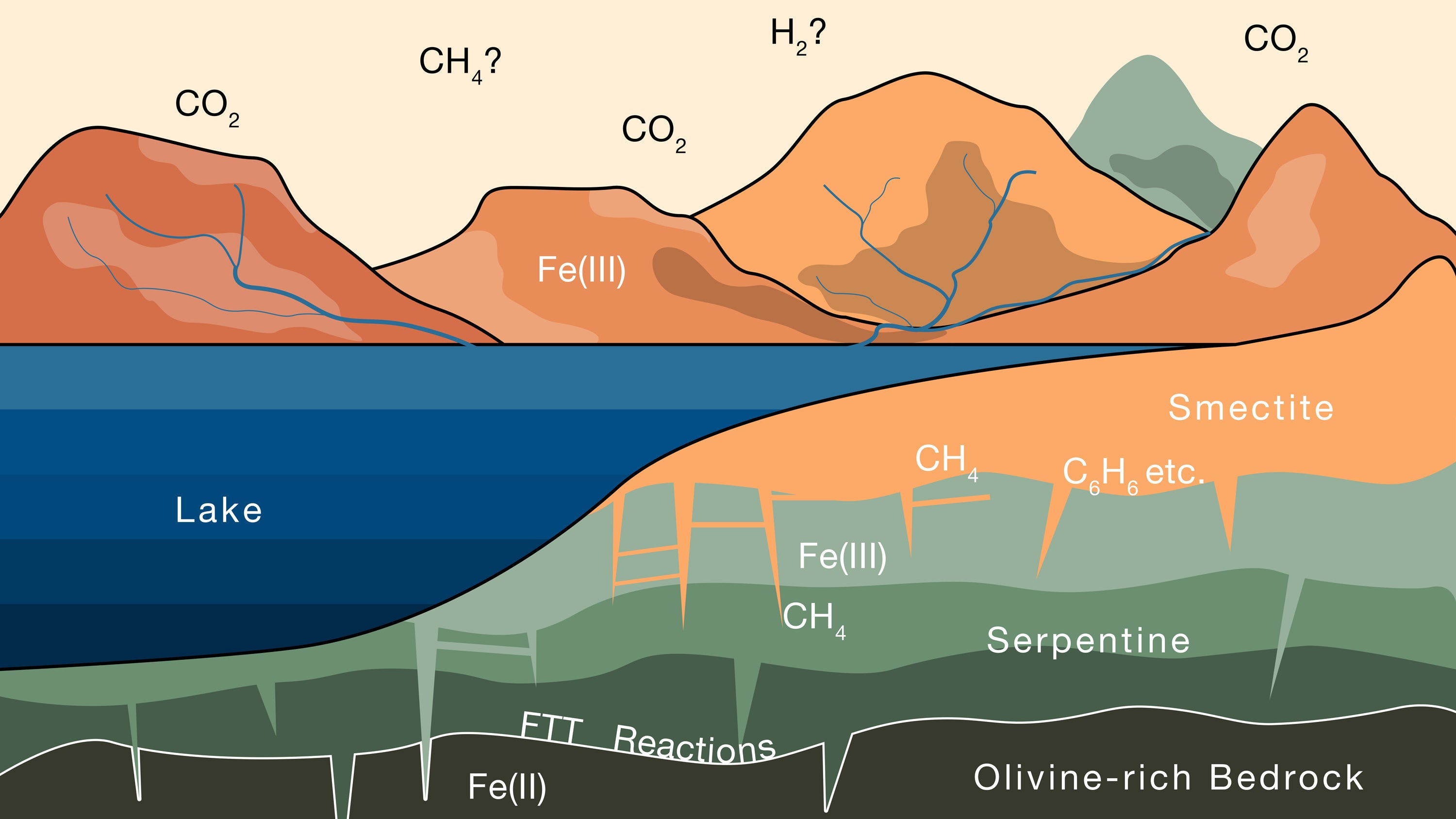Where did Mars’ atmosphere go? Scientists believe they finally know what happened
It could be hiding in plain sight, researchers say.
When Mars lost its atmosphere billions of years ago, it transformed from a planet that could have supported life into a cold desert world.
But exactly what happened to the thick air that once surrounded the red planet has puzzled scientists for decades.
Now researchers from the Massachusetts Institute of Technology (MIT) in the US believe the answer may be “hiding in plain sight”, within the planet’s iron-rich clay.

They propose that much of the missing Martian atmosphere was absorbed by the planet’s crust – in the form of methane – some 3.5 billion years ago.
This raises hope that one day, the methane stored in Martian clay could be recovered and used as fuel in future missions between Mars and Earth, the researchers said.
Oliver Jagoutz, professor of geology in MIT’s Department of Earth, Atmospheric and Planetary Sciences (EAPS), said: “This methane could still be present and maybe even used as an energy source on Mars in the future.”
It is thought that Mars once had a thick atmosphere, liquid water and a strong magnetic field – the key conditions that allow life to thrive on Earth.

Researchers argue that over time, water on the Martian surface trickled down through the rocks, setting off a slow chain reaction that drew carbon dioxide (CO2) out of the atmosphere and converted it into methane, a form of carbon.
Dr Joshua Murray, who recently graduated from MIT’s EAPS, said: “At this time in Mars’ history, we think CO2 is everywhere, in every nook and cranny, and water percolating through the rocks is full of CO2 too.”
The researchers said that water would have first reacted with a mineral rich in iron known as olivine, which is abundantly available on Mars, to create iron oxide, giving the planet its orange-reddish colour.
This would have allowed the free hydrogen molecules from water to combine with carbon dioxide to form methane, they added.
In some ways, Mars' missing atmosphere could be hiding in plain sight
Meanwhile, over time, the olivine would have slowly transformed into a type of iron rich clay known as smectite, the researchers said.
Previous research by the team has shown that smectites can store carbon for “billions of years”.
Dr Murray said: “These smectite clays have so much capacity to store carbon.
“So then we used existing knowledge of how these minerals are stored in clays on Earth, and extrapolate to say: if the Martian surface has this much clay in it, how much methane can you store in those clays?”
The researchers calculated that smectites on the red planet could hold up to 1.7 bar of carbon dioxide, which would be equivalent to around 80% of early Martian atmosphere.
Prof Jagoutz said: “Based on our findings on Earth, we show that similar processes likely operated on Mars, and that copious amounts of atmospheric CO2 could have transformed to methane and been sequestered in clays.”
Dr Murray added: “We find that estimates of global clay volumes on Mars are consistent with a significant fraction of Mars’ initial CO2 being sequestered as organic compounds within the clay-rich crust.
“In some ways, Mars’ missing atmosphere could be hiding in plain sight.”
The research is published in the journal Science Advances.